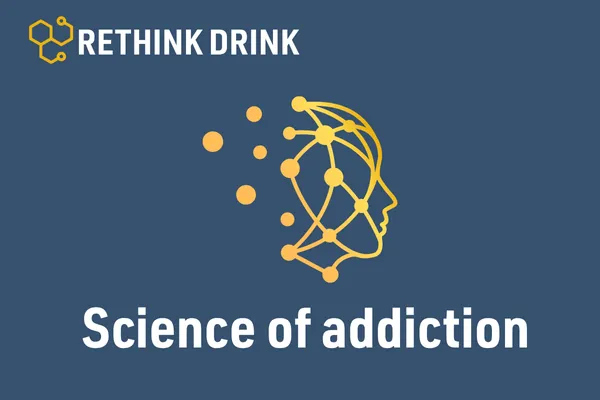
The Science Behind The Sinclair Method
Key Takeaways
The Sinclair Method (TSM) uses targeted medication to treat alcohol use disorder (AUD) by retraining the brain's reward system.
Naltrexone is taken only before drinking to block the pleasurable effects of alcohol.
Over time, this process leads to “pharmacological extinction” of the alcohol-craving response.
TSM is backed by decades of clinical research and neuroscience.
It offers an evidence-based alternative to abstinence-only recovery models.
Alcohol has long been used to numb, to celebrate, and to escape—but for those of us struggling with alcohol use disorder (AUD), the story quickly turns from one of choice to compulsion. Traditional recovery methods often push for immediate abstinence, yet many find this approach unsustainable. That’s where The Sinclair Method (TSM) comes in: a science-backed, medication-assisted pathway that challenges the norm by allowing controlled drinking while extinguishing cravings over time.
Let’s explore the compelling science that makes TSM not only effective—but revolutionary.
How The Sinclair Method Works
At its core, TSM is based on a process called pharmacological extinction. Rather than forcing abstinence, it reconditions the brain’s learned association between alcohol and pleasure.
Here’s how it works:
You take Naltrexone, an opioid receptor antagonist, one hour before drinking alcohol.
Naltrexone blocks the endorphins (the brain’s natural opioids) released when alcohol is consumed.
Because the “reward” of drinking is blocked, the brain gradually learns that alcohol is no longer pleasurable.
This leads to reduced cravings and, over time, a natural decline in alcohol consumption.
TSM doesn’t involve withdrawal symptoms, white-knuckling, or guilt. It’s a gradual shift—empowered by neuroscience.
The Role of Naltrexone in TSM
Naltrexone is the unsung hero of TSM. It works by blocking mu-opioid receptors in the brain, which are partly responsible for the euphoric effects of alcohol.
When these receptors are blocked:
Drinking alcohol becomes less pleasurable.
The reinforcement loop (drink → feel good → drink more) is broken.
Cravings decrease because the brain no longer receives a reward from alcohol.
This is very different from taking Naltrexone daily regardless of alcohol use. The Sinclair Method requires Naltrexone to be taken only before drinking, which is why timing and consistency are critical.
The Neuroscience of Addiction and Extinction
To understand why TSM works, we need to consider how addiction operates in the brain.
Addiction is a form of learned behaviour. Every time we drink and experience pleasure, the brain strengthens the link between alcohol and reward. Over time, this association becomes automatic and deeply ingrained.
Here’s what TSM does differently:
It targets this learned association directly.
By blocking the reward while continuing the behaviour (drinking), the brain begins to “unlearn” the habit.
This is known as extinction learning, and it's a powerful tool in behavioural neuroscience.
In essence, we’re rewiring our brains to no longer crave alcohol. The process is rooted in well-established psychological principles used in treating phobias and compulsive behaviours.
What Makes TSM Different?
Unlike traditional sobriety programmes that demand abstinence from day one, The Sinclair Method:
Emphasises harm reduction over rigid rules.
Allows individuals to continue drinking as they reduce their intake gradually.
Focuses on long-term brain change rather than short-term willpower.
Has shown success even in those who have failed with other methods.
This method resonates especially with those who feel overwhelmed by the pressure of permanent sobriety. TSM offers a scientific, empowering approach to recovery that feels achievable and sustainable.
You can learn more about the real-life transformation of others in the film One Little Pill, which showcases the power and potential of The Sinclair Method.
Research and Clinical Backing
TSM isn’t a fringe idea. It’s based on decades of clinical research conducted by Dr David Sinclair, a Finnish-American scientist who devoted his career to understanding and treating alcohol addiction.
Key points from the research:
Dr Sinclair’s studies showed up to an 80% success rate in reducing problem drinking.
The method has been validated in multiple peer-reviewed studies across Europe and the United States.
The World Health Organization (WHO) recognises Naltrexone as an effective treatment for alcohol dependence.
These findings challenge the assumption that lifelong abstinence is the only solution. Instead, science supports flexibility and personalisation in recovery, which is what TSM embodies.
Support Is Key to Success
Although the science is sound, consistent and supported implementation of TSM is crucial. Naltrexone needs to be taken correctly and every drinking session must be preceded by the medication for the extinction process to work.
That’s why we provide a free screening call for anyone considering this path. In it, we:
Discuss whether TSM is the right fit.
Offer guidance tailored to your needs.
Connect you with ongoing coaching and support.
Having expert help increases adherence, tracks progress, and ensures the method is followed correctly—maximising your chances of success.
Rewriting the Recovery Narrative
TSM doesn’t just treat alcohol use disorder—it challenges the stigma around it. It shifts the narrative from shame to science, from punishment to progress.
At Rethink Drink, we believe in meeting people where they are, not where others think they should be. The Sinclair Method offers a recovery journey grounded in compassion, autonomy, and clinical evidence.
If you’re curious about changing your relationship with alcohol without quitting overnight, TSM might be the answer you've been looking for.
